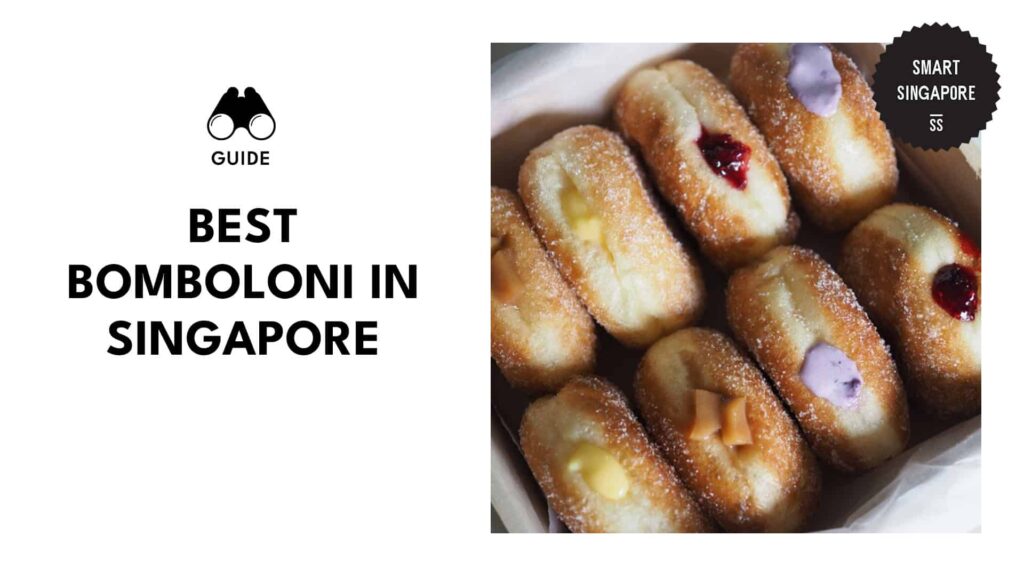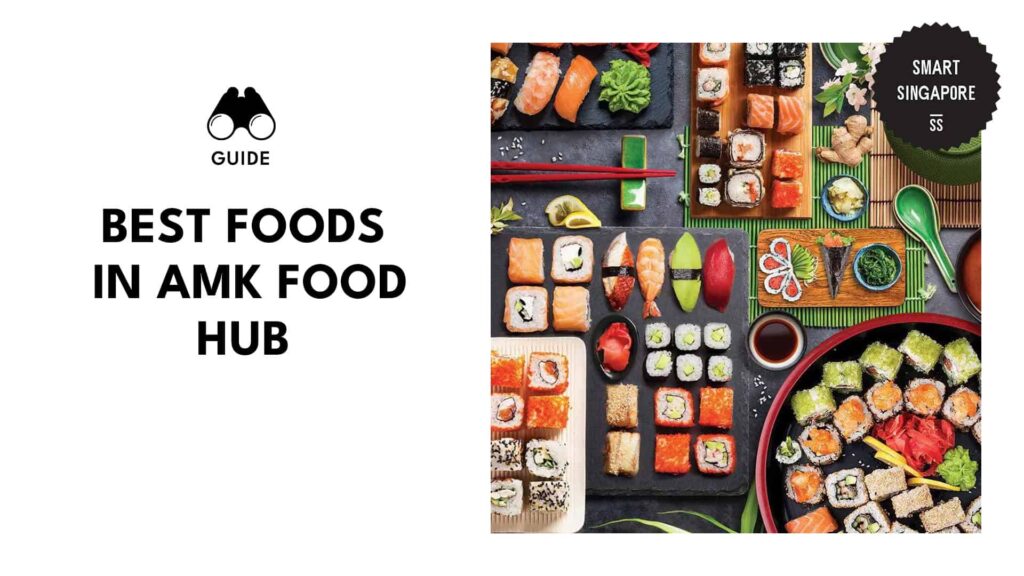Categories > Guides and Tips
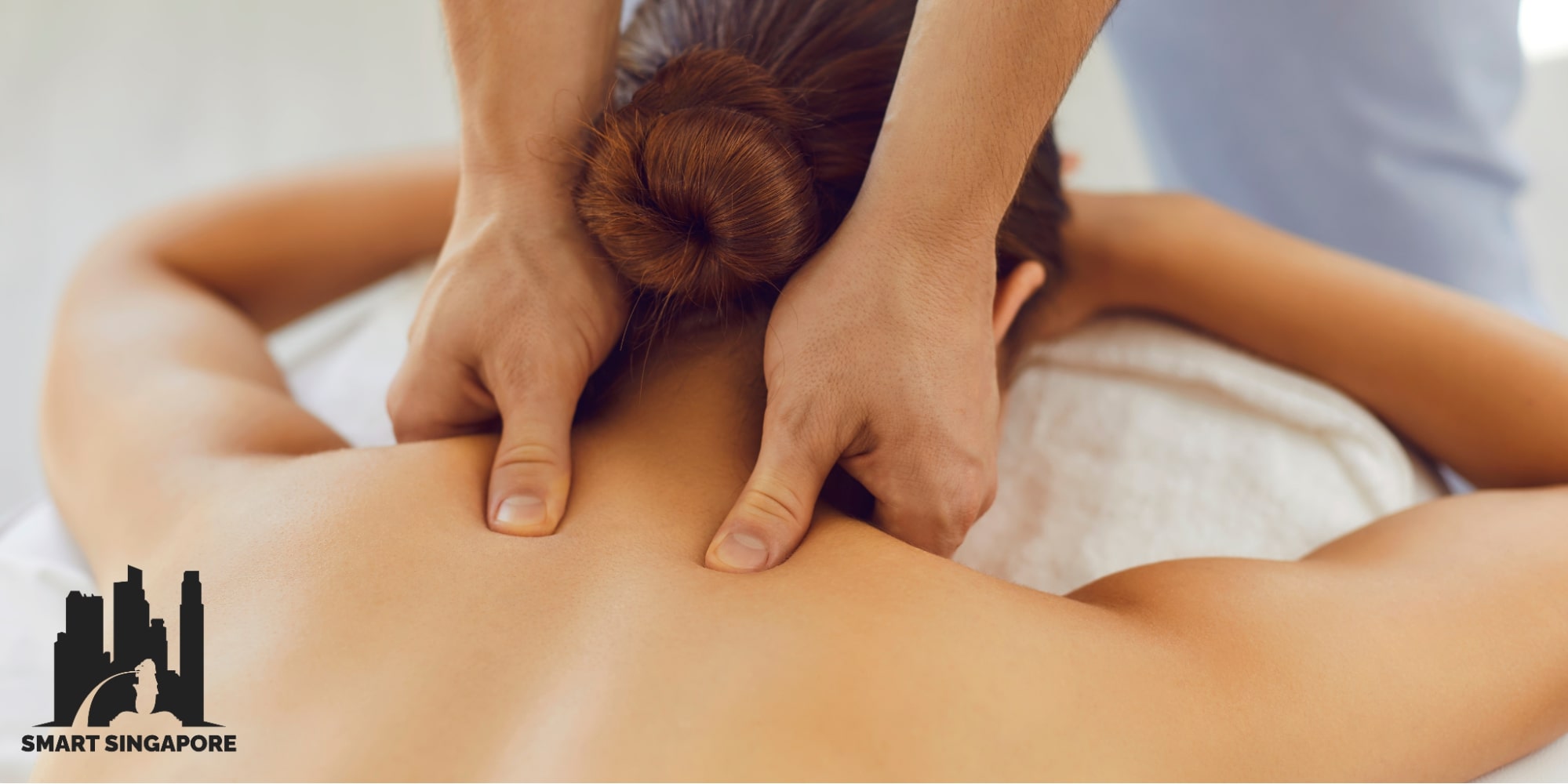
All You Need to Know about TCM Tui Na Massage in Singapore
- What is TCM or tui na massage?
- What are common techniques used in tui na massage?
- The One-Finger Pushing Method
- The Nei Gung
- The Bone Setting Method
- The Rolling Method
- What are the key benefits of tui na massage?
- Better Blood Circulation
- Deep Sleep
- Relief from Muscle and Joint Pain
- Treats Carpal Tunnel Syndrome
- Improves Symptoms of Chronic Diseases
- What are the side effects of tui na massage?
- How much does tui na massage cost in Singapore?
- What can I expect during a tui na massage session?
- TCM and Tui Na: The Bottom Line
Many doctors and scientists have done research on traditional Chinese medicine (TCM) and tui na massage, and studies show mixed views on its effectiveness in healing ailments.
Tui na, in particular, is lauded for its healing properties as compared to its more common therapy counterparts like Swedish and deep tissue massages.
If you’re keen on exploring the health benefits of tui na massage, here are crucial points to remember before you book a session with a TCM specialist.
What is TCM or tui na massage?
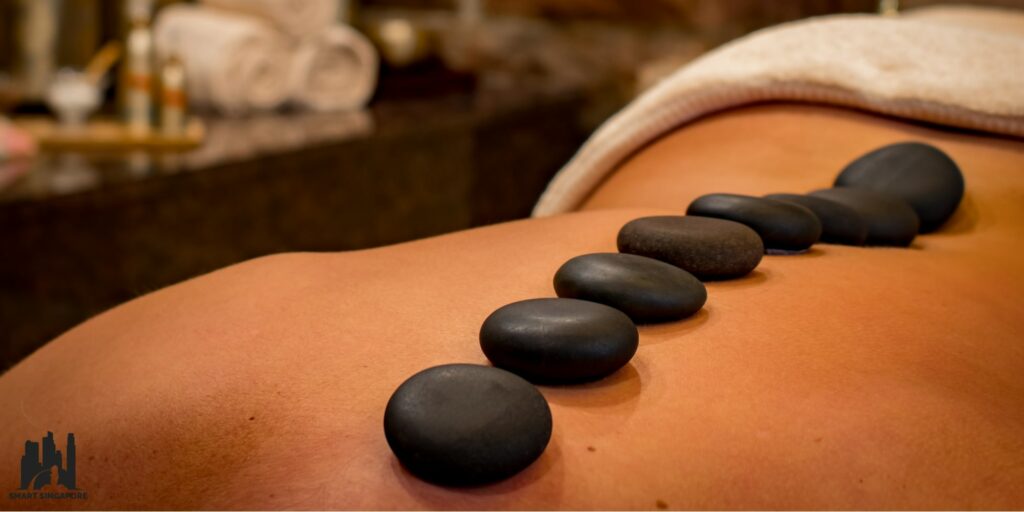
Keynote: The words “tui” and “na” mean “to push” and “to lift” respectively. The kind of manipulative therapy in tui na massage essentially pertains to pushing out the force that blocks your qi or energy from flowing throughout your body.
Tui na massage is an ancient therapeutic practice under the five branches of traditional Chinese medicine that focuses on muscle manipulation.
Widely known as the oldest form of massage, tui na differs from other common massage types due to the integration of TCM principles like qi or chi.
Qi is a term in TCM used to describe the universal force that binds all matter together. The concept of qi in TCM is prevalent, especially in tui na.
When the flow of Qi, or your energy, is blocked, the harmony within your body is then compromised, leading to several problems like blood circulation and muscle tension.
The words “tui” and “na” mean “to push” and “to lift” respectively. The kind of manipulative therapy in tui na essentially pertains to pushing out the force that blocks your qi from flowing throughout your body.
Practitioners use tui na to balance the flow of qi and stimulate natural healing within the body.
Aside from direct muscle manipulation, tui na is often combined with acupuncture and moxibustion, two branches of TCM that use needles and mugwort leaves.
In TCM, the body has pressure points where tui na practitioners focus to stimulate proper qi flow. From there, practitioners use varying massage techniques to remove blockages.
What are common techniques used in tui na massage?
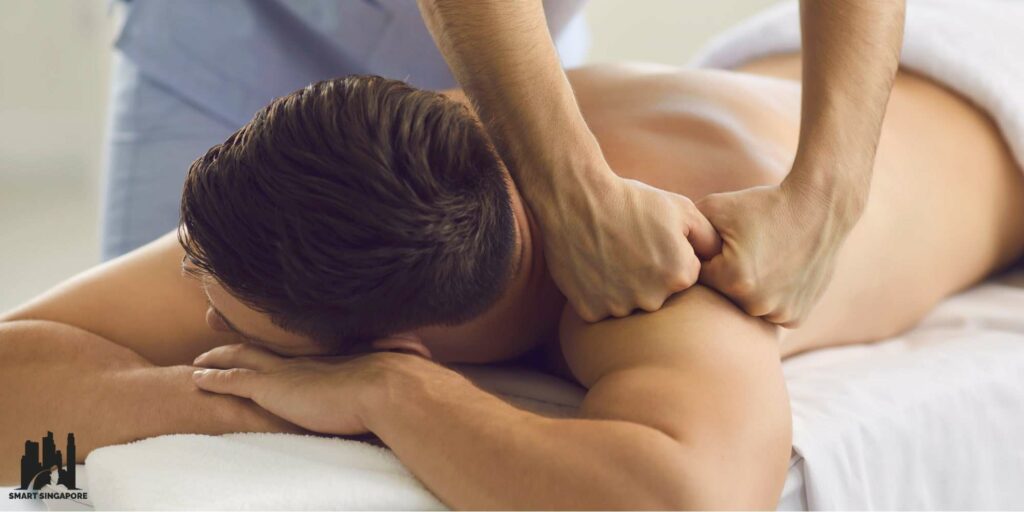
- One-finger pushing
- Nei gung
- Bone setting
- Rolling
Tui ma practitioners use a myriad of special massage techniques using the palms, knuckles, and fingers to knead and manipulate muscles all over the body.
Practitioners may shake, stretch, and use tools to better penetrate muscles and tissues. Compresses, salves, and herbal concoctions are often used to help the practitioner glide through the skin better during the massage session.
There are specific methods for manipulating tissues in the body, and each can be used in emphasis to provide better pressure on specific points in the body. These are
1. The One-Finger Pushing Method
Relieves insomnia, indigestion, headaches, joint pain, abdominal pain, traumatic injuries, infertility, and gynaecological issues
This tui na technique targets specific acupressure points in your body using one finger. It particularly helps relieve tension and treat internal diseases.
A tui na practitioner will use their thumb to push along the pressure points in your body. Since the thumb is flexible, the practitioner can press down and rock their hand to produce a vibration-like sensation along the back, neck, lower limbs, and joints.
By adding more pressure, the one-finger method can relieve insomnia, indigestion, headaches, and joint pain.
It is also believed that the one-finger pushing method helps relieve discomfort from abdominal pain and traumatic injuries.
It’s also common for practitioners to practice this method to help stimulate healing from infertility and gynaecological issues.
2. The Nei Gung
Improves circulation and focus
Nei gung is a body of meditation techniques used by practitioners to stimulate better qi flow from an external force. It’s used to target full-body muscle manipulation.
It’s an ancient practice commonly used in martial arts and is a common practice in tui na.
Nei gung is widely considered as an essential extension of tui na massage techniques. It involves moving and breathing in a certain way to relax the mind and refine qi flow guidance.
Think of it as the practitioner meditating to guide harmony from their body to yours as they apply pressure on your muscles and push out the blockages.
It is said that incorporating nei gung to tui na induces better circulation and focus. This external-internal approach dates back thousands of years.
3. The Bone Setting Method
Realigns the spine, discs, and joints
Bone setting is another known massage technique that involves manipulating the joints and bones, as compared to muscles.
Bone setting is often considered to be a predecessor to chiropractic therapy. The method aims to reset sprains, fractures, and dislocated joints.
Practitioners of tui na may use bone setting during a session when a need to treat bone-related injuries arises.
Combined with Tui Na, bone setting complements healing and better qi flow by realigning the spine, discs, and joints to reduce injuries and nerve pain from those areas.
4. The Rolling Method
Relieves joint pain, sprains, and general muscle pain, including abdominal pain and muscle stiffness
The rolling method is another technique that focuses on addressing problems related to soft tissue.
This technique aims to induce blood circulation to treat joint pain, sprains, and general muscle pain.
For a practitioner, the rolling method is one of the most difficult techniques to master, as it involves rolling the hand and wrist across the body to expel tension.
The rolling method is often done with both hands and targets the lower back area. It is also used on acupressure points on larger muscles and joints to alleviate pain and spasms.
It’s one of the most effective techniques in treating abdominal pain and muscle stiffness. Clients experiencing chronic back pain may greatly benefit from this penetrating method.
What are the key benefits of tui na massage?
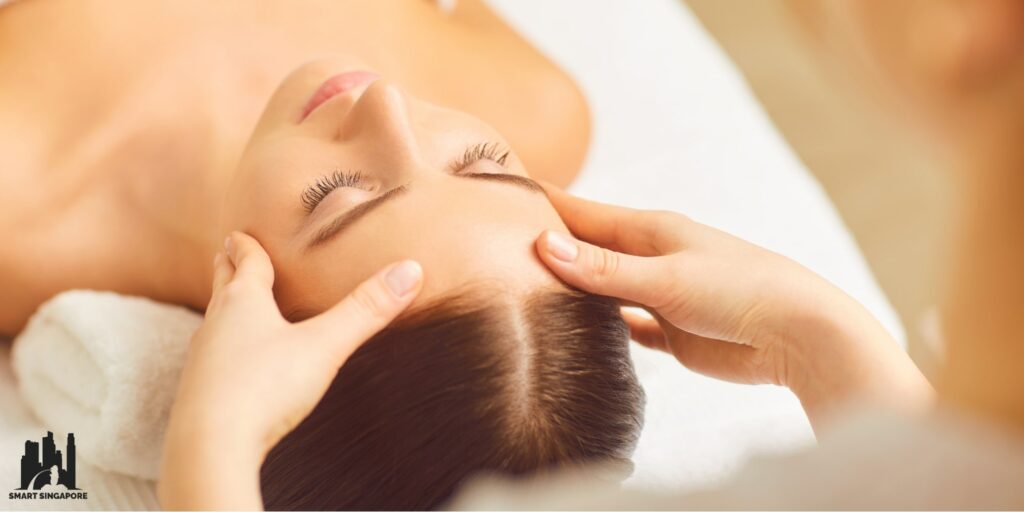
Since tui na aims to rebalance qi flow within the body, there are several health benefits attached to the practice such as an improved immune system, better blood circulation, and relief from tension and pain.
Tui na is also known to induce relaxation and relieve stress. The therapy itself stimulates more focused thinking and better prevention of chronic pain.
To give you a better idea of how tui na positively affects your well-being, here are key health benefits you may get after undergoing a session:
1. Better Blood Circulation
The massage therapy boosts blood circulation, which is an important indicator of your body’s natural energy flow.
Proper blood circulation delivers oxygen to the rest of your body. A boost in blood circulation helps your organs function properly and keep your mind sharp.
When blood circulation is reduced, your organs will receive less oxygen and nutrients, which may cause problems to the heart and brain.
Tui na addresses blood circulation by giving qi better access to the rest of your body. When Qi flow is restored, your organs can function better.
2. Deep Sleep
Tui na can help treat insomnia by inducing relaxation and deep sleep. When the body and mind are relaxed, the sensation triggers regeneration through rest.
Clients who suffer from insomnia may benefit from tui na’s sleep-inducing properties. Better sleep leads to improved alertness and cell repair.
3. Relief from Muscle and Joint Pain
To many followers of TCM, tui na massage is a go-to therapy for joint and muscle pains.
Since this type of massage therapy involves applying medium to hard pressure on the body, it can provide relief from muscle tension that often leads to body aches and joint pain.
Clients who undergo regular tui na massages may experience better relief from pain and stiffness. They may also notice better function and movement as muscles and joints are continually manipulated.
4. Treats Carpal Tunnel Syndrome
In addition to the therapeutic qualities of acupuncture, tui na can relieve signs of carpal tunnel syndrome.
Carpal tunnel syndrome is caused by immense pressure on the median nerve. By applying tui na techniques on acupressure points, clients may notice relief from numbness and tingling on the hand.
5. Improves Symptoms of Chronic Diseases
As TCM is an alternative form of medicine in treating ailments and diseases, tui na addresses internal issues by manipulating qi flow from the outside.
That said, using tui na techniques on specific acupressure points may help improve symptoms of chronic diseases like diabetes.
Foot issues caused by diabetes are a common ailment that tui na practitioners attend to. Along with TCM foot baths, tui na massage therapy can help reduce swelling, pain, and blood flow in the feet.
What are the side effects of tui na massage?
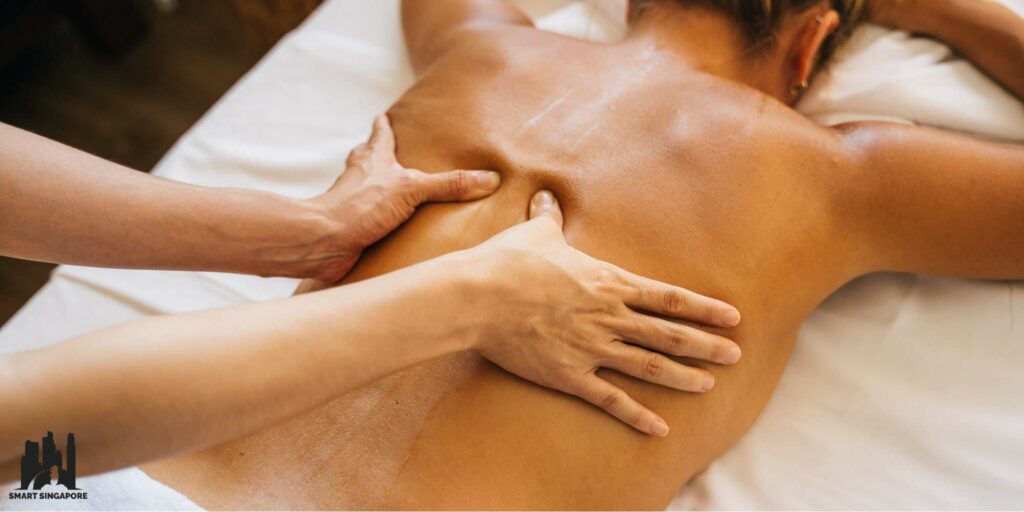
- Discomfort
- Bruising
- Nausea and dizziness
While there are several benefits of undergoing tui na massage, the use of TCM as an alternative form of medicine poses some side effects.
Since TCM and tui na don’t often use science as a basis for healing, there are mixed views on its effectiveness. Thus, side effects are common among patients who solely rely on the practice.
While generally relaxing, tui na massage differs from other massage types due to the applied force on the body.
The techniques are not as gentle as regular massages and may cause discomfort or bruising after a session.
Some clients experience emotional release during or after a tui na massage session, and it’s common to feel side effects like nausea and dizziness due to postural hypotension.
Clients with chronic back issues and fractures may need to consult a medical doctor about undergoing tui na therapy to prevent further discomfort following the massage.
How much does tui na massage cost in Singapore?
TCM tui na in Singapore can cost around $60 to $80 an hour, depending on the TCM centre you visit.
In private wellness centres, tui na massages can cost anywhere between $100 and $200 a session.
Depending on the treatment plan you choose and the health concerns you’re suffering from, tui na massage prices can vary, but some can cost as low as $30 to $50.
Just note that tui na massage is a therapy that may require follow-up sessions in the long run. Once full relief is achieved, you can reduce the number of massage sessions gradually.
What can I expect during a tui na massage session?
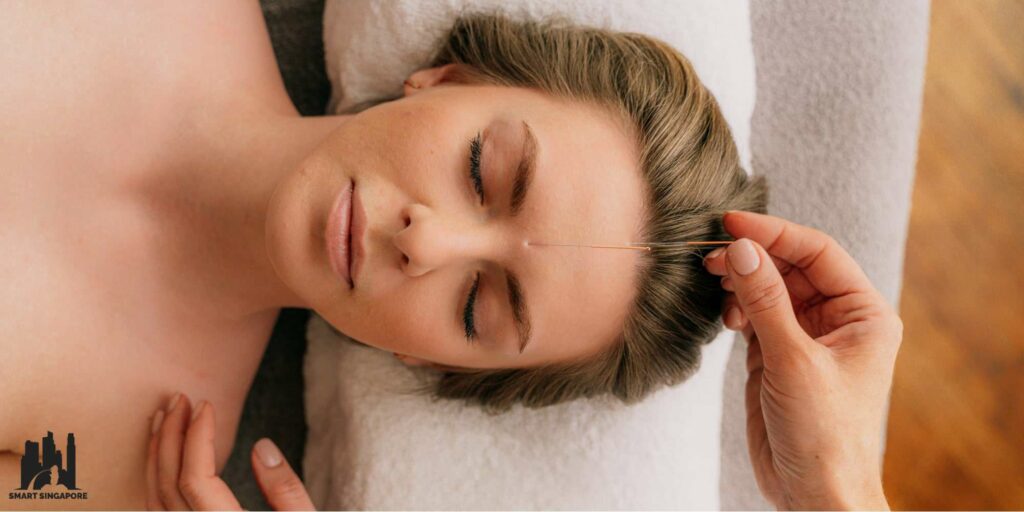
In your chosen TCM centre, a practitioner will first examine your symptoms and current body conditions to determine the best approach to use.
After the assessment, the practitioner will assist you with preparing for the session. Tui na massage is often done in a prostate position or on a massage chair.
The practitioner can also include other TCM practices like acupuncture and moxibustion during the session.
Oils and herbal medicine may be used to help the practitioner perform tui na techniques better on your body.
It’s best to inform the practitioner about any skin sensitivity to chemicals used in these oils and herbal medicines to prevent severe allergic reactions.
A session can last anywhere between 30 minutes to an hour, depending on the severity and location of your muscle and joint problems.
After the session, you may be asked to recover by sitting and relaxing your body for a few minutes. This is to relieve side effects like dizziness due to postural hypotension.
This often happens after a client stays prostate for a prolonged period of time. Some clients may experience emotional release and may need time to recover from the sensation.
TCM and Tui Na: The Bottom Line
As an alternative form of medicine, TCM and tui na are effective therapies to treat several health concerns related to the mind and body.
Tui na has been practised for centuries and many clients in Singapore find the therapy helpful in maintaining a healthy lifestyle and balanced qi.
For first-time clients, TCM and tui na massage can seem overwhelming, but these are safe and therapeutic forms of healing that may complement any medical treatment.
It’s important to remember that tui na or TCM is an alternative, and clients should still seek the advice of a medical doctor when considering this type of therapy.
This is to ensure that any underlying conditions such as bone fractures and muscle weakness won’t be compromised during a session.
Turning to more holistic approaches to healing is a great way to understand your body’s needs and improve your overall well-being. Tui na massage is a great way to jumpstart your TCM wellness journey.



